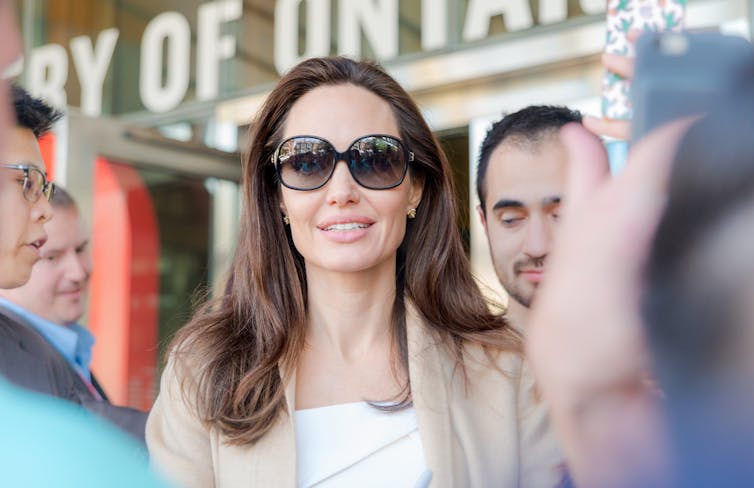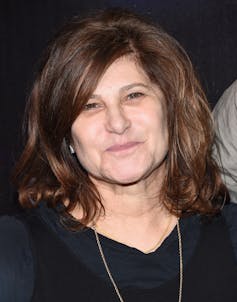Harvey Weinstein, the Hollywood producer with 300 Oscar nominations, has fallen. After The New York Times revealed decades of accusations of sexual harassment involving a string of actresses, including high profile names such as Ashley Judd, Gwyneth Paltrow, Angelina Jolie and Cara Delevingne, Weinstein was sacked from his own company. He has “unequivocally denied” any allegations of non-consexual sex and was last seen heading off on a plane to check into rehab. For a long time though, it appears, this issue was an open secret, with digs even being made during the 2013 Oscar nominations.
Weinstein is not the first to be accused of abusing his power on the infamous “casting couch” – a term well talked about in the circles of film and television. Marilyn Monroe once described Hollywood as an overcrowded brothel, saying she spent the first half of her career mainly on her knees.
But why has this culture been allowed to continue for decades and decades? It is a well recorded fact that the movie business is a male dominated one – an exclusive club at that. More women are graduating from the world’s top film and television schools and, with a 50/50 male/female split in most cases, often outperforming, achieving higher grades, than their male counterparts, so why are they not in positions of power equal to men? To date, there has only been one female Oscar winning director, Kathryn Bigelow (2009) since the Academy Awards began in 1929. And almost all of the movie moguls, who wield star-making powers, are male.
The British Film Institute (BFI) came right out and said it:
We don’t believe this situation [with Harvey Weinstein] would have taken so long to surface had there been greater parity of women in the industry.
The BFI said that advocating for better inclusion and representation is central to its strategic priorities and that it had introduced a number of interventions to drive change.

A study of companies in the UK, US, and India has shown they perform better financially when they have at least one female executive on the board.
Importantly, having women in the boardroom also helps foster a culture that is respectful to females and aids decisions that will benefit other women. For one, they can resist a misogynistic culture by calling out male colleagues when they make inappropriate comments about women.
Men are currently dominating decision-making roles, ultimately influencing the type of films that are greenlit, who stars in them and who is behind the camera. Jobs are not advertised in a traditional way, meaning that employment practices rely on word of mouth and existing, primarily male, networks.

Directors UK’s 2016 report, Cut Out of the Picture examined a total of 2,591 films released between 2005 and 2014 and found that “in that ten-year period studied, just 13.6% of working film directors were women”. A pattern that is replicated in the US. The report’s authors also stated there had “not been any meaningful improvement in the representation of female directors for decades”.
When you look at on-screen roles, the picture is even more dismal. Who’s calling the Shots examined the list of Oscar role nominations from the past 88 years and found the winning roles for genders to be quite different: while men win for roles portraying characters such as lawyers or criminals, women get them for playing wives, mothers and prostitutes. The report, published in 2014, emphasised how little has changed for on-screen roles for women since 1946. A BFI/Nesta Report (2017) showed that 1917 was, in fact, when women were at their peak of representation in British Film.
Although barriers would seem to have broken down to open up access for women to train and prepare for a career in the screen industries, they do not enjoy the same kind of career paths as their male counterparts. Why, if more females have the relevant skills and training than ever before, are they still a minority in key roles in the film and television industries? Decision making roles are highly significant, as they not only dictate the type of stories that are made but also the way they are told. There has been some blockbuster success. Patti Jenkin’s Wonder Women (2017) and Kathryn Bigelow’s The Hurt Locker (2008), for example, prove that women can do it, but more trailblazers are needed.
With fewer female heads the cycle is allowed to continue within the film and television industry and, as a result, both on and off screen roles for women remain the same, as well as the working culture behind the scenes.
Kate Kinninmont MBE, CEO of Women in Film and Television (WFTV), said:
In the largely freelance world of film, it is difficult for junior people to speak up. And it is always the young and vulnerable who are targeted: sexual predators are deluded, not stupid. Weinstein is the tip of the iceberg. The problem will persist until women have achieved a greater degree of equality across the whole industry. We’re making progress. But we’re not there yet.
It is encouraging to hear the BFI’s new commitment to 50/50 gender balance for their film fund, but that is a mere drop in the ocean to the power of the Hollywood movie business. They must follow suit if they are serious about culture change. Every effort has to be made to get women in key positions of power, the talent is out there.


